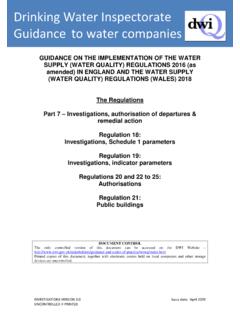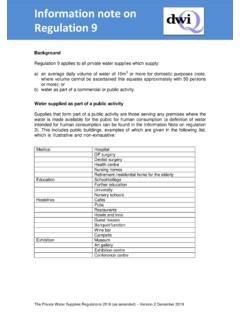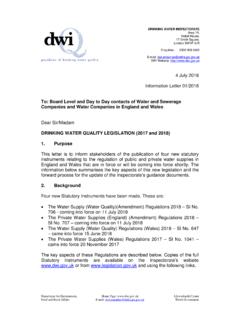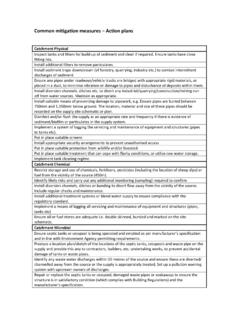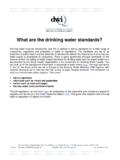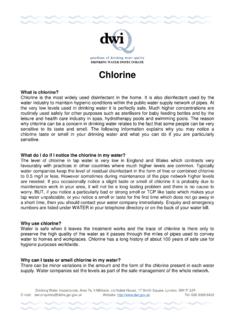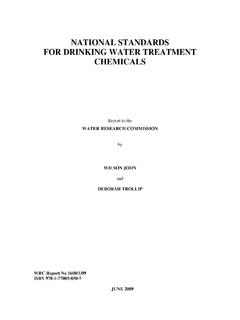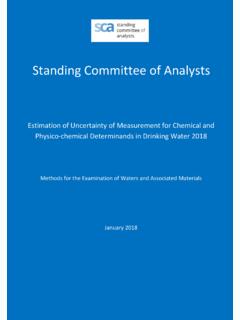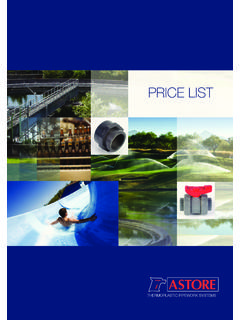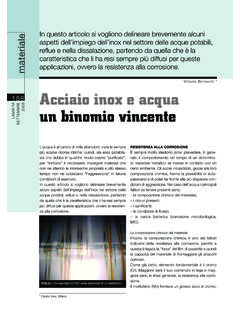Transcription of Drinking water safety
1 Drinking water safetyGuidance to health and water professionals Drinking water safety Guidance to health and water professionals Published by The Drinking water Inspectorate 55 Whitehall London SW1A 2EY General enquiries: 0300 068 6400 e mail: Website: ISBN 978 1 905852 40 6 Crown Copyright 2009 Copyright in the typographical arrangement and design rests with the Crown. This publication (excluding the logos) may be reproduced free of charge in any format or medium provided that it is reproduced accurately and not used in a misleading context. The material must be acknowledged as Crown Copyright with the title and source of the publication specified. Table of Contents Foreword ..1 Introduction .. 3 How is Drinking water quality regulated? .. 3 The legal framework Drinking water Inspectorate.
2 3 The legal framework Health Protection Agency .. 4 The legal framework public water supplies .. 5 The legal framework private water supplies .. 8 The legal framework local authorities .. 8 Wholesome Drinking water .. 9 Drinking water testing .. 9 The safety of Drinking water .. 10 What if something goes wrong? .. 12 Protecting the public when something goes wrong .. 15 Notable learning points from significant incidents .. 18 Nature of the warning advice .. 18 Dissemination of warning advice .. 20 Provision of alternate supplies .. 21 Public information about Drinking water quality .. 23 Improving Drinking water quality .. 23 Consumer complaints .. 24 Other UK Drinking water regulators .. 25 How do we control new and emerging issues approach and rationale? .. 25 Drinking water Research.
3 25 Drinking water Quality and Health Research Programme .. 26 Annex 1: The Incident Assessment letter from the Drinking water Inspectorate on the loss of supplies from Mythe water treatment works in July 2007 .. 27 Annex 1 continued: Legal Advice to the Cabinet Office given during the Mythe Incident .. 47 Annex 2: The effectiveness of the Drinking water quality regulations .. 49 Annex 3: Drinking water Hazards .. 53 Annex 4: Drinking water safety Plan Methodology .. 69 Annex 5: Example of a notice issued by DWI to a water company .. 74 Annex 6: Content of Notifications about Drinking water Quality Events .. 79 Annex 7: Examples of warning advice notices provided to consumers by water companies .. 81 Annex 8: Advice on precautions to be taken by the immunocompromised individual in relation to boil water notices.
4 96 Foreword September 2009 In 2007 there was a major water supply incident involving the loss of water supplies to 160,000 properties in Cheltenham, Gloucester, Tewkesbury and a large part of rural Gloucestershire due to the waterworks being inundated with flood water . The assessment of this incident by the Drinking water Inspectorate (DWI) is reproduced at Annex 1. Subsequent to this, and other incidents, national level discussions between DWI and the Health Protection Agency (HPA) led to an agreement to prepare and publish joint guidance to health and water professionals in support of Drinking water quality risk assessments and the issuing of consumer protection advice. In developing this guidance we recognised the need to set out for health professionals the structure and legal framework of the water industry in England and Wales, and to describe the arrangements in place for securing the quality and safety of Drinking water on a day to day basis.
5 It is against this background that consultants in communicable disease control, and other health professionals, may be called upon to give public health advice to the water industry and local government on consumer protection in relation to a water supply incident. We also felt that this information would provide health professionals with useful context to the publication, Drinking water , that they receive each year from the Chief Inspector setting out the annual results of Drinking water tests and documenting the learning from water quality incidents. This guidance document closely follows the structure of Drinking water Standards and Science, published in 2005 by DWI and made available through the Internet and public 1 libraries, to inform the public how Drinking water is regulated, safeguarded and improved where necessary.
6 It is intended that DWI will keep the internet version of this guidance document under regular review and notify all water and health professionals of any updates. In their day to day role, water quality scientists in the water industry work closely with health professionals in the HPA and local authorities. We consider the maintenance of sound working relationships to be very important to the delivery of effective and timely responses to water quality incidents and emergencies. In our opinion, this guidance, together with Regulation 27 water Supply Risk Assessments (based on WHO water safety Plan Methodology), should form the basis of regular dialogue at local level to develop collective knowledge, understanding and trust. In the preparation of this guidance it has been uppermost in our mind that the safety of Drinking water in England and Wales is something the public is able to take for granted, because the day to day water supply arrangements in place are comprehensive and demonstrably based on sound science with a fully transparent system of independent scrutiny and appropriate sanctions in place.
7 Accordingly, this guidance contains nothing new and we do not believe that its adoption will require any special action to be taken by the water industry or health professionals over and above its incorporation into existing training regimes, and its inclusion in water supply and public health operating and emergency management procedures. Professor Jeni Colbourne MBE Chief Inspector of Drinking water Drinking water Inspectorate Professor Nigel Lightfoot CBE Chief Advisor Health Protection Agency 2 3 Introduction This document has been developed jointly by the Drinking water Inspectorate (DWI) and the Health Protection Agency (HPA). It is intended to inform consultants in communicable disease control (CsCDC) and other health professionals about the structure and legal framework of the water industry in England and Wales.
8 It also explains when and how CsCDC are likely to be called upon to give health protection advice about Drinking water quality to the water industry, local authorities, consumers and DWI. How is Drinking water quality regulated? The particularly important features of the Drinking water quality legal framework are highlighted in this document. A paper demonstrating the effectiveness of the regime since its inception in 1990 can be found in Annex 2. The legal framework Drinking water Inspectorate DWI is the Drinking water quality regulator for England and Wales. It was formed in 1990 on the privatisation of the water industry. It is part of the Department for Environment, Food and Rural Affairs (Defra), but its Chief Inspector is appointed by the Secretary of State for Environment, Food and Rural Affairs (in England) and the National Assembly for Wales, and acts independently of government.
9 The overarching objective of DWI is to maintain public confidence in the safety and quality of public water supplies through the exercise of its powers of reporting, audit, inspection, enforcement and prosecution. In addition, Drinking water Inspectors are scientists/engineers with considerable water supply and water quality monitoring experience, therefore DWI also has a role in providing government with advice on water supply and quality matters. The regulatory framework for water supplies in England and Wales is set out in the water Industry Act 1991 (the 1991 Act). The 1991 Act was amended by the water Act 2003. The Act defines the powers and duties under which DWI operates and also the duties of water companies and licensees. Under the 1991 Act the authorities 4 responsible for regulating the quality of public supplies are the Secretary of State for Environment, Food and Rural Affairs (in England) and the National Assembly for Wales.
10 DWI s website holds the relevant legislation. The legal framework Health Protection Agency The HPA is an executive non departmental public body (NDPB) of the Department of Health created by the Health Protection Agency Act of 2004. The agency exists to help protect the health of everyone in the United Kingdom and its functions specified in the Act include, among others, the protection of the community against infectious disease and other dangers to health and the prevention of the spread of infectious disease . The Chairman and members of the HPA board are appointed by the Secretary of State for Health and the devolved administrations. To exercise its functions, the Agency may engage in and commission research, obtain and analyse data, provide laboratory, technical and clinical services and provide training in areas covered by its functions.



